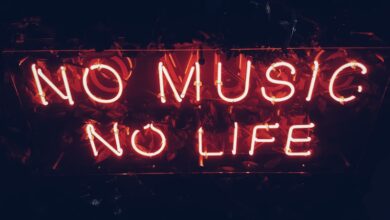Beyond the Stage: Musical Instruments in Film Scores

Introduction:
Have you ever wondered how movies manage to ignite our emotions and transport us to different worlds through their captivating soundtracks? The magic lies in the artful fusion of visuals and music. In this article, we will explore the fascinating role of musical instruments in film scores and how they enhance the cinematic experience.
Unleashing Emotions:
Musical instruments are more than mere tools for creating melodies; they are storytellers. Just like actors convey emotions through their performances, musical instruments have the power to evoke feelings within us. From the soul-stirring melody of a violin to the thunderous roar of a brass ensemble, each instrument adds depth and intensity to the narrative, amplifying the impact of key scenes.
Creating Atmosphere:
Imagine a suspenseful scene in a thriller movie. As the tension builds, the soundscape becomes eerie and unsettling. This effect is often achieved by employing unique and unconventional instruments such as the theremin or the waterphone. By harnessing the distinct timbres and textures of these instruments, composers can create an otherworldly atmosphere that captivates the audience’s senses.
Character Portrayal:
Just as costumes and makeup contribute to character development, musical instruments play a crucial role in shaping the identities of fictional personas. Whether it’s the haunting sound of a pipe organ accompanying a villain’s entrance or the playful tinkling of a glockenspiel mirroring a child’s innocence, the choice of instrument can instantly communicate a character’s traits and motivations without the need for dialogue.
Symbolism and Motifs:
In film scores, musical motifs act as sonic symbols, representing ideas, characters, or themes throughout a movie. These recurring melodies provide a sense of continuity and help viewers connect with the story on a deeper level. Instruments often carry these motifs, infusing them with distinct tonal qualities that reinforce their significance. Just as a visual symbol can hold great meaning, a musical motif can leave a lasting impression on the audience.
Conclusion:
Next time you watch your favorite movie, pay attention to the intricate dance between visuals and music. The carefully chosen instruments in film scores add layers of emotion, atmosphere, and characterization, immersing us in the story like never before. So let yourself be carried away by the enchanting melodies and allow the magic of musical instruments to transport you beyond the stage and into the cinematic world.
Unveiling the Magic: How Musical Instruments Transform Film Scores into Emotional Masterpieces

Have you ever wondered how a film score can transport you into a world of emotions, making you laugh, cry, or even feel tremendous excitement? The secret lies in the skillful use of musical instruments, which possess the remarkable ability to transform the cinematic experience into an unforgettable journey.
Picture this: a suspenseful scene unfolds on the screen. As the tension builds, the haunting sound of a violin pierces through the silence, evoking a sense of unease and anticipation. The music intensifies, perfectly complementing the visuals and amplifying the emotional impact. It’s as if the violinist is whispering secrets directly into your ear, capturing your attention and heightening your senses.
Similarly, when an epic battle scene erupts, the thundering beats of the percussion section reverberate through your body, infusing you with adrenaline and immersing you in the chaos and intensity of the moment. The drums mimic your heartbeat, syncopating with the action onscreen and creating a powerful connection between the viewer and the story.

But it’s not just about individual instruments; it’s the synergy created by their collective presence. A symphony orchestra, with its vast array of strings, woodwinds, brass, and percussion, becomes the driving force behind a film’s emotional landscape. Each instrument has its role to play, like characters in a grand narrative, coming together to form a tapestry of sonic richness.
Think of it as a painter’s palette. Just as an artist selects colors to convey different moods and emotions, a composer carefully chooses instruments to create a specific atmosphere. The piano, for instance, with its delicate and introspective qualities, might accompany a poignant love scene, tugging at your heartstrings with each gentle note. On the other hand, a soaring trumpet or a majestic French horn may herald a triumphant moment, filling you with awe and wonder.
In this symphony of storytelling, musical instruments become the voice of the film itself. They have the power to transcend language barriers and speak directly to our souls. So, the next time you find yourself enthralled by a movie’s soundtrack, take a moment to appreciate the magic happening behind the scenes. The seamless integration of musical instruments elevates films from mere visuals to emotional masterpieces, leaving an indelible mark on our hearts and minds.
From Strings to Keys: Exploring the Diversity of Musical Instruments in Cinematic Soundtracks
Are you a fan of movies? Have you ever wondered how music enhances the cinematic experience and captivates our emotions? In this article, we will delve into the enchanting world of musical instruments in cinematic soundtracks. From strings to keys, let’s explore the diversity that brings these compositions to life.

When it comes to creating an unforgettable movie soundtrack, composers have an array of musical instruments at their disposal. Each instrument adds its own unique flavor to the overall composition, evoking different emotions and enhancing the storytelling.
Strings, such as violins, cellos, and double basses, are often associated with powerful and emotional moments in films. They can create a sense of tension, sadness, or even joy, depending on how they are played. Just think of the haunting melodies in horror movies or the soaring themes in epic adventures.
Brass instruments, like trumpets, French horns, and trombones, bring a bold and majestic quality to cinematic scores. They can signify triumph, heroism, or the arrival of something grand. Imagine the triumphant fanfare that accompanies the hero’s entrance on the silver screen.
Woodwind instruments, including flutes, clarinets, and oboes, offer a wide range of tonal colors. They can evoke a sense of mystery, playfulness, or serenity. Picture a delicate flute melody floating through the air, creating an ethereal atmosphere in a magical scene.
Percussion instruments add rhythm and intensity to film scores. Drums, cymbals, and timpani create thrilling and dramatic moments, intensifying action sequences or building suspense. The pounding of drums can quicken your pulse and make you hold your breath during a climactic scene.
And let’s not forget about keyboards, which include pianos and synthesizers. Piano melodies can be hauntingly beautiful or tenderly poignant, while synthesizers bring a modern and futuristic touch to the soundtracks.
The diversity of musical instruments in cinematic soundtracks is a vital element in creating an immersive movie experience. From the soaring strings to the majestic brass, each instrument adds its own unique voice to the storytelling. So, the next time you watch a film, pay attention to the beautiful symphony of sounds that accompanies the visuals, and let the music transport you to new emotional heights.
Harmonizing the Silver Screen: The Impact of Musical Instruments on Movie Soundscapes
Lights, camera, action! When it comes to the world of movies, there’s no denying the immense power of the silver screen. But have you ever stopped to ponder the impact that musical instruments have on creating captivating movie soundscapes? From the soul-stirring melodies of a violin to the thunderous beats of a drum, these instruments play a pivotal role in harmonizing the cinematic experience.
Imagine watching an epic battle scene unfold before your eyes. As the warriors clash swords, the symphony of orchestral strings swells, creating a sense of tension and anticipation. The haunting notes of a flute pierce through the air, adding an ethereal touch to the ambiance. Without the presence of these instruments, the scene would lose its immersive quality, leaving us yearning for that emotional connection.
In the realm of film, each instrument serves as a character, telling its own story. The piano, with its versatile range, can evoke a myriad of emotions – from melancholy to joy. It dances effortlessly alongside the protagonist, mirroring their every move. Similarly, the energetic strumming of a guitar can transport us to the sun-drenched streets of a vibrant city, infusing the narrative with warmth and vitality.
But what about the percussive powerhouses that command our attention? The drum sets the pulse of the movie, dictating the rhythm and pace. Whether it’s a thrilling chase sequence or a heart-pounding action scene, the relentless beat of the drums heightens our senses, keeping us on the edge of our seats.
Music has the remarkable ability to transcend language barriers, and musical instruments amplify this effect. A single note played by a trumpet can trigger a cascade of emotions within us, without the need for words. Just like an actor’s performance, the melody of an instrument has the power to elicit tears of joy, spine-tingling excitement, or bittersweet nostalgia.

Musical instruments are the unsung heroes of movie soundscapes. They breathe life into scenes, igniting our imagination and enhancing our viewing experience. So next time you find yourself immersed in a cinematic masterpiece, take a moment to appreciate the symphony of sounds produced by these remarkable instruments. They truly are the magical thread that weaves together the tapestry of emotions on the silver screen. Lights out.
Instrumental Storytelling: How Film Scores Capture the Essence of Characters through Music
Have you ever wondered why certain movies have such a profound impact on our emotions? One crucial element that often goes unnoticed but plays a significant role in shaping our cinematic experiences is the film score. Film scores are not just background music; they are powerful tools that enhance storytelling and help us connect with characters on a deeper level. In this article, we will explore the captivating world of instrumental storytelling and how film scores capture the essence of characters through music.
Film scores serve as a bridge between the visual and emotional aspects of a movie. They have the ability to communicate feelings, evoke moods, and even define characters. Just like a skilled painter uses different brushstrokes to create a masterpiece, composers employ various instruments, melodies, and harmonies to paint the sonic landscape of a film.
Imagine a scene where a hero embarks on a daring adventure. The triumphant swell of an orchestra fills the air, mirroring the character’s determination and courage. The music brings us closer to their journey, intensifying our emotional connection and heightening the sense of excitement.
Similarly, film scores can also convey the deepest emotions of a character. When a protagonist experiences heartbreak or loss, a melancholic melody accompanied by gentle piano notes might accompany the scene. This musical representation allows us to empathize with the character’s pain, bridging the gap between their fictional world and our own experiences.
Through music, film scores provide unique identities to characters. Think of iconic themes like the hauntingly beautiful “Hedwig’s Theme” from Harry Potter or the instantly recognizable “Imperial March” from Star Wars. These melodies become synonymous with their respective characters, forever etched in the memories of movie lovers worldwide.
In addition to individual character themes, film scores employ leitmotifs—musical phrases associated with specific characters, places, or ideas. These leitmotifs recur throughout a film, subtly reminding us of their significance and adding depth to the overall narrative. Just like a recurring motif in a novel, these musical motifs create cohesion and enhance our understanding of the story.

Film scores are an integral part of visual storytelling, allowing us to experience movies in a multi-dimensional way. By capturing the essence of characters through music, composers transport us into their worlds, eliciting emotions and enriching our cinematic journeys. So, the next time you find yourself captivated by a film, take a moment to appreciate the intricate melodies that breathe life into the characters on the screen.




